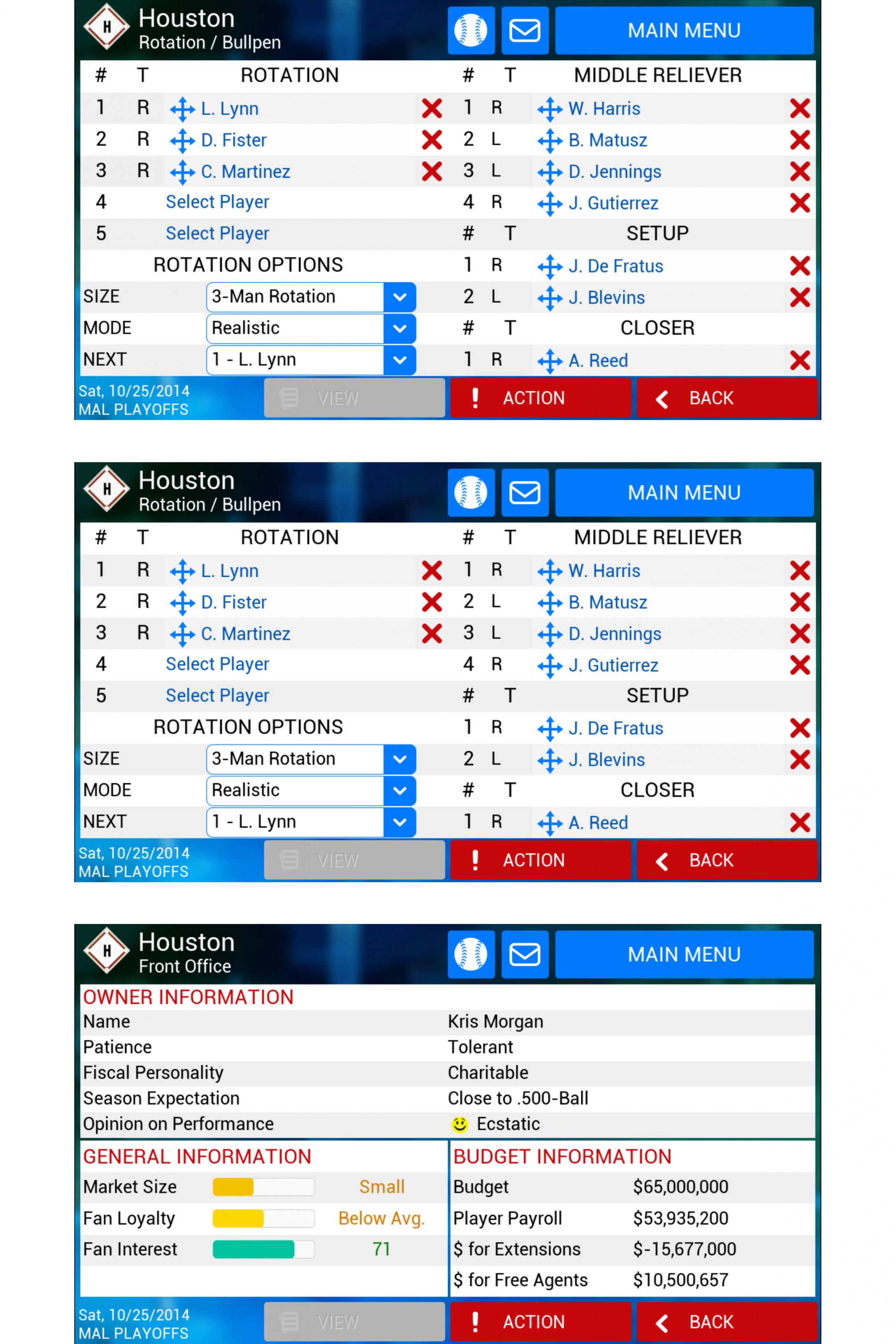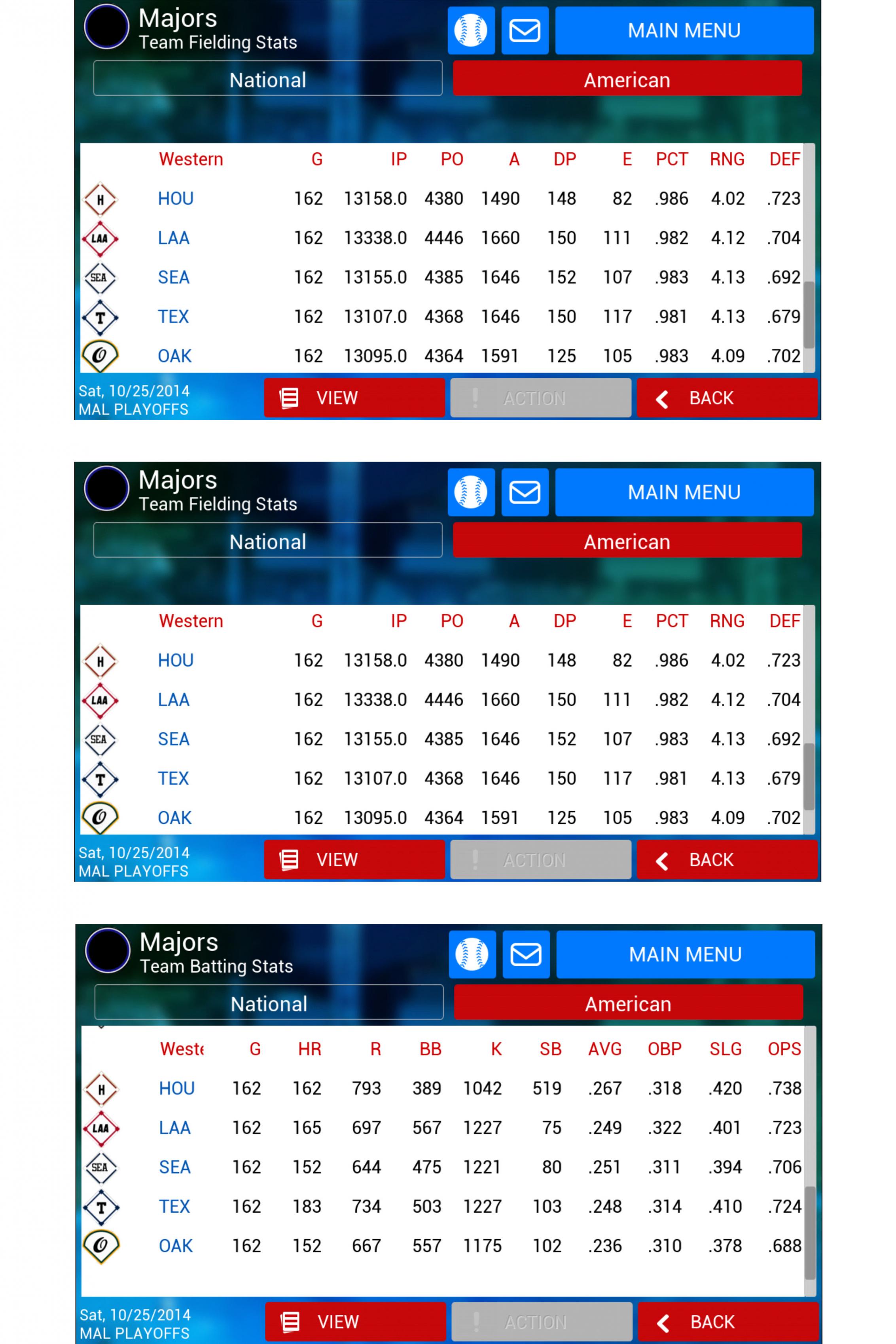Ok, so - we have all been exposed to the concepts of "moneyball", but while possible to be competitive with such a system, to date, the system has not truly won anything outright.
So, I spent some time crunching numbers and came to a shocking realization. The problem with winning on a budget is the starting pitchers. So, I thought, why not get rid of them altogether?
I constructed a system that has a 12 man pitching staff containing the following pitching slotts:
Starter 1 - pitches innings 1-3
Starter 2 - pitches innings 1-3
Starter 3 - pitches innings 1-3
Featured Reliever 1 - Pitches inning 4-5 (these pitchers will get most of the wins)
Featured Reliever 2 - Pitches Inning 4-5 (these pitchers will get most of the wins)
Middle Reliever 1 - Pitches inning 6-7
Middle Reliever 2 - Pitches inning 6-7
Setup Man 1 - Pitches inning 8
Setup Man 2 - Pitches inning 8
Closer - Pitches inning 9
Floater 1 - Fills in for ANY slot if the pitcher slotted is tired
Floater 2 - Fills in for ANY slot if the pitcher slotted is tired
These pitchers should all be guys with pretty good stuff - but don't spend a lot of money on any of them. TA 15-13-12 is good enough for a #1 starter, and a 17-12-10 is fine for a closer. The others, just stay at 13 or better on stuff and don't go below 10 on control. The starters need a stamina of about 10 to make sure they can be ready to pitch 3 innings when their turn comes up again, but the others don't need to have any significant stamina. HOOK YOUR PITCHERS on this schedule religiously. If they get in trouble early, you can go to a floater, but don't go long EVER. The key here is to never let a tired pitcher throw a pitch. Ever.
Now, with the lineup, you want to trade off everyone that makes more than 5-6 million. You want to end up with every slot on the field with a 15 defense minimum. You can go with a 14 for one or two of them if you must, but remember, your high defense scores will make your good pitchers pitch like great pitchers for a couple of innings, and that is essential to you success.
Place a lot of value on speed and contact. Unlike moneyball which discourages stealing and bunting, steal like a freakin bandit and squeeze nearly every time you have a man on third with less than 2 outs. On your bench, you should have at least 2 guys with an 18 speed so you can pull your first baseman or catcher for a good baserunner when necessary. The Run and Hit option (as opposed to Hit and Run) is your friend. Also, men on 1st and 2nd with stealing / speed of 13+ means double steal every time.
If a pitcher is not producing, just trade him for another equivalent pitcher - it won't be hard because they don't have big salaries tying you to them. Throughout the season you will end up changing up your pitching staff, but make sure you fill each slot and stick to your pitching schedule.
Results? Here are the screen shots from my latest game as the Houston Astros ($65 million payroll) using this system:



So, you might ask yourself, why has this never been tried in real life? Actually, for about 20 games ensemble pitching was tried by Tony Larussa way back when in Oakland. While it was getting results, the starters were not happy because they could not be credited with a win. So it was a short lived experiment, and did not include the other parts of the equation - focusing on speed and defense for instance. I think it could work in real life if you could convert some middle relievers into your 3 starter so they don't get all bent out of shape about never being allowed to claim the win.